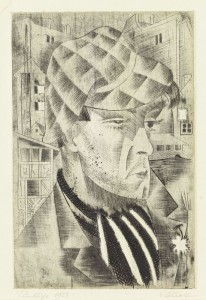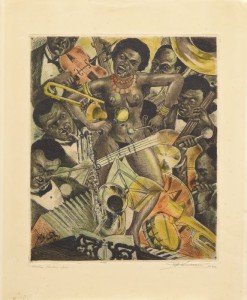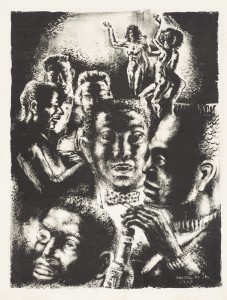In the Kumu Art Museum of Estonia 3rd floor, B-wing is a overview exhibition about history of Estonian printmaking in 1860–1944.
Printmaking is a field in which Estonian artists started to be noticed internationally as early as the 1930s and again in the 1960s due to its innovative spirit.
Many know the name Eduard Wiiralt but, along with this printmaking genius, more than 80 other artists are represented in this exhibition, some of whom have found a worthy place in art history, while others are still awaiting research.
Printmaking is a field in which Estonian artists started to be noticed internationally as early as the 1930s and again starting in the 1960s, when, with its innovative spirit, it was the leading art form. If we do not include August Clara, who was active in the early 19th century and blended into Baltic German culture, the first Estonian graphic artists appeared in the second half of the 19th century and studied outside Estonia. In 1914 the Estonian Art Society founded the Tallinn School of Arts and Crafts (later called the State School of Arts and Crafts, the forerunner of today’s Estonian Academy of Arts), and in 1919 the Pallas School was founded in Tartu (as of 1924 the Higher Art School Pallas), which also educated graphic artists – each according to his/her objectives. The development of printmaking in this period has been dealt with thoroughly in Eesti kunsti ajalugu (History of Estonian Art) (vol. 1, II, 1977). However, it is one thing to read about art, another to see it in the original, to have the opportunity to experience its changes and to make comparisons between the different schools and individuals. Many know the name Eduard Wiiralt but, along with this printmaking genius, more than 80 other artists are represented in this exhibition, some of whom have found a worthy place in art history, while others are still awaiting research. Although printmaking is a reproductive art, pictures printed on paper are often treated carelessly, but fortunately at least single copies exists of some of the works exhibited here. Perhaps exhibition visitors will discover the charm of traditional printmaking techniques and learn to appreciate their complexity and mastery, and start to better understand this art form of a more metaphorical idiom than painting.
Visuals from the exhibition are available in the Art Museum of Estonia’s digital collection.
Curator: Mai Levin
Coordinator: Anne Untera
Assistant: Karin Pastak
Exhibition design and graphic identity by: Inga Heamägi
Exhibition opened until 26 April 2015.



